Here I shall put my beliefs and thoughts on various “controversial” topics so people stop asking me the same questions every single day.
This is me stating my beliefs, and then explaining why I hold these beliefs. While I do not have the intention of proving or debunking anything, it may enter that territory when I pry further into my own personal rationalisations.
Here’s what I’ll be covering:
- Burn in
- Cables and wiring
- Significance of “driving ability” in IEMs (this article)
- Significance of DAC performance in general
Let the crucifixion begin.
Background
The IEM community is rife with many long-standing beliefs such as the effectiveness of “burn-in” or the significance of cables in the audio chain. But one that gets my head scratching the most is the obsession with this thing called “power”, and how it is described as a make-or-break component in the audio chain.
Picture this: you’ve just purchased the newest hype on the block. You put it in your ears and you think, “man, this just doesn’t live up to my expectations”. You take these impressions down to your local audio forum (or most likely just Head-Fi) and express your disappointment to your fellow brothers in aural sanctuary. And that was that, a nice peaceful discourse settled by the agreement to disagree.
As if. No, what instead happens is that you’re bombarded with prying investigative inquiries about what you’d used as your DAP. Maybe your amplifier, perhaps your DAC even, and if you’ve offended these gatekeepers enough you might even get jeers towards your song choices! But no, you buckle down to your keyboard and start defending yourself. You have the right sources for sure! It’s not your audio chain, it’s just the IEM!
You know what? It doesn’t matter what source or DAP you claim to have at this point. Because regardless of how “powerful” your source may be, some clown will come down and say the magic words that inspired this very post.
“You’re not giving it enough power.”
The basics
Scientific definition
Wattage. The “watt” is a unit of power and is what you measure when somebody talks about the power of an amplifier. There is no subjective leeway in this definition; power is calculated by multiplying current with voltage. Or maybe you’d want to use resistance multipled by current-squared. Or maybe voltage-squared divided by resistance.
“Power” is a basic physics concept and one can easily determine the power of an amplifier with easily obtainable measurements and manufacturer-provided spec sheets, provided they don’t fudge the numbers.
impedance, power and volume
This is a question that I’ve been getting a lot so this is certainly a very useful section of this article, even if you may not agree with my final conclusions.
You’ve probably seen amplifier spec sheets citing their power ratings in units of “mW @ ohms”. So there we go, we’ve found the magic Watts number so that’s our power right? Then what’s with the “ohms” part at the back?
That’s when the impedance value of your IEMs come into play. The real power output of your amplifier depends on its load, in this case being the IEM. Usually amp manufacturers cite their power ratings at a load of 16 ohms, so if your IEM just so happens to be at exactly 16 ohms, that’s the amount of MAXIMUM power that the amplifier is able to send into it.
But of course, the world is not perfect. Your IEM’s impedance is probably slightly different, so that number the amplifier manufacturer gave is not going to be exact for your situation. If your IEM’s impedance is lower than the load used in the manufacturer’s measurement, then you can expect even MORE power flowing into your IEM AT MAXIMUM. If it’s higher, then you can expect less power. At MAXIMUM.
Wait, what about volume? Well wouldn’t you know it, even the IEM guys have the numbers you need. You can probably find a spec sheet for your IEMs if they aren’t a shady bunch (I’m looking at you, Spiral Ears) and so the magic metric you’d be looking for in this case is “Efficiency”. Stated as “dB SPL/mW”.
There we go, the magic Watt number again. SPL is pretty self explanatory if you’ve been in this hobby enough or have been hanging around construction sites; it’s just how loud your IEM goes. So the efficiency of an IEM is measured as how loud it can go when you put in a single milliwatt of power through it. And in case you need a decibel-to-exposure scale:
Ideally you’d want to be listening at 85-88 decibels (continuous) at the very maximum if you don’t want to your hearing to go by 40.
Now that you’ve understood how impedance, power and volume work, you are now qualified to use power calculators! So now you don’t even need a calibrated measurement rig to know how far your amplifier can push your IEM.
Efficiency
Here’s where I believe that the whole concept of “power” is irrelevant in the context of IEMs. The efficiency of an IEM is typically north of a hundred decibels at a single milliwatt of power, with some going as beyond 120dB/mW and others rarely dipping below 100.
“Wait a second,” so you cry, “a single milliwatt? But some of these amplifiers are rated at hundreds of milliwatts, and others beyond a watt!”
An astute observation, you should be awarded a medal. Yes, the maximum power rating of these amplifiers far, FAR exceed the needs of anybody with normal human ears. You’d be using a miniscule fraction of that maximum power in normal listening, and so this whole concept of inadequate power being an explanation for bad sound is a demonstration of how many audiophiles simply lack the basic knowledge on audio circuits, yet proclaim half-truths with the confidence of a seasoned academic.
Let’s do a theoretical exercise. Let’s say that you listen to your music at about 90dB, and you have IEMs rated at 16 ohms impedance with a sensitivity of 90dB SPL/mW. So that means you need one milliwatt of power in order to get your desired volume.
Now you have two amplifiers. Amp A is rated at 10mW @ 16 ohms, while amp B is rated at 1,000mW @ 16 ohms. Amp B is clearly the more powerful amplifier in terms of maximum output, but does it matter?
Does it really matter if you simply require a fraction of that power to listen at your own comfortable volumes?
Power and volume are directly related concepts here. With more power, you simply get more volume. The scientific definition of power has nothing to do with audio quality.
Devil's advocate
Wattage versus Distortion
When I presented the above statements to the “Pro-Power” camp, the usual counter-argument would be that it is not the actual power output of the amplifier itself (what an argument it is, really), but rather the “quality” of said power.
So by that logic, you can have an amplifier that’s rated at a maximum power output of a single milliwatt of power @ 16 ohms, but as long as said power is “high quality” or “clean”, it can be regarded as a “powerful amplifier”. Which brings into question why should the word “power” even be used when it has nothing to do with the actual definition in the first place.
The quality of power is an easy measure: distortion. Which then converts to metrics like SINAD (Signal-to-noise and distortion ratio) which are easily measurable and have been done so by individuals such as Amir (from Audio Science Review fame). If the power doesn’t distort (or distorts within reason), then it is considered as “clean power”. And I assume that this is synonymous with “powerful” for these people. And yet I have a distinct feeling that these are the same people who would never consider peasant sources like the Apple dongle as “powerful” despite them measuring extremely cleanly.
My ultimate point is that if you’re saying one thing but meaning another, STOP. Power is power, distortion is distortion. They are different concepts and need to be treated differently too, even in the subjective world of audio.
Power headroom
One theory I’ve seen being put up for the case of “excess power” is the concept of headroom. A theory that states that an amplifier performs best at certain lower percentages of its rated maximum output, and so it is not ideal to get something that is “good enough” and run it near its maximum.
The whole point of headroom is to ensure that tracks with high dynamic range is reproduced faithfully, as amplifiers running close to its rated maximum may encounter clipping whenever the track’s volume goes up too high. At these clipping points, distortion artifacts are introduced and so your fidelity is compromised.
Let’s go back to the power numbers we’ve been playing with. We have established that IEMs are sensitive equipment and modern amplifiers have more than enough power to drive them. So even if you’re using something as simple as an Apple USB-C dongle (which has demonstrated maximum power outputs of about 31 milliwatts into a 33 ohm load), you still have plenty of headroom to work with. The concerns about the brief bursts of higher SPL resulting in clipping is nowhere existent here. Going from that to something with five or even ten times the power output doesn’t really affect the concept of its “headroom” that much, since you’d just be going from “a lot of excess headroom” to “a ridiculous excess of headroom”.
But, there is a certain objective truth to distortion concerns in amplifiers. Many amplifiers out there tend to distort at higher power outputs, especially when the load used is especially low. But again, this is not a concern at all because:
- Distortion spikes/clipping artifacts occur at roughly >95% of the amplifier’s maximum output (for decently implemented ones at least)
- You’re using less power at lower loads anyways, simply because of how sensitive IEMs today are.
And if you’re still concerned about this because you’re playing at near-max power on whatever source you have, TURN DOWN THE VOLUME! You’re an audiophile, not a nightclubber. Protect your ears.
Impedance matching
Also known as “damping factor” in certain circles but I don’t want to get too deep into it. Most of my readers are familiar with the concept of impedance matching but I’ll do a brief rehash for the unfamiliar: certain IEMs change in their frequency response as the output impedance of the amplifier changes.
This is not a general rule as this is dependent on one thing: the IEM’s impedance response. If the IEM’s impedance response is flat (or relatively so), it would not change much with output impedance. But if the IEM’s impedance response is non-linear (AKA super wonky like the Andromedas), just the tiniest variation in the amplifier’s output impedance is enough to change the FR of the IEM to an audible degree.
The rule-of-thumb commonly cited is “1/8th of the headphone’s impedance” but that’s not entirely true; it should be specified as “a MAXIMUM of 1/8th of the headphone’s impedance”. For IEMs, the lower the better. But of course, if you want to tuned your wonky-impedance IEMs with Z-out then you’ll need to find the right output impedance for your own specific case.
But why exactly am I talking about impedance and damping in an article about power? Well similar to distortion, the concept of impedance matching is somehow synonymous with “power” for certain people. And to repeat myself: if you’re saying one thing but meaning another, STOP.
Source matching
Sometimes things are a little more subjective and simple than just hard math and raw engineering.
The concept of “source matching” is how one tunes the final sound by meshing the signature of the amplifier with the signature of the IEM to their own specific tastes. Perhaps you’re someone who adores warmth, so you go all out in pairing a warm source like the Mojo with a warm IEM like the Phantom. Or perhaps you’re someone like me, who prefers a contradictory approach and pairs his warm IEMs with a more sterile-sounding source. Either way, your combinations are yours to love and nobody can take that away from you.
Unless you’re someone who also refers to this kind of matching as “power”. STOP.
Conclusion
Power is largely irrelevant in IEMs due to how good modern amplifiers are and how efficient modern IEMs are. You are not going to be using anywhere close to maximum power output of your amplifiers on your IEMs and if you are, please check up on your local audiologist.
For those who feel like denouncing me after this article for my views, do note that I use an iFi Micro iDSD Black Label for testing and reviews. A DAC/amplifier combo rated at 4W @ 16 ohms.
That’s not 4 milliWatts. That’s 4 Watts. Don’t complain.
Big thanks to all my Patreon supporters for another great month!
And of course, my shoutouts to my very special big-money boys:
“McMadface”
Denis
Nicholas
Justin
“caravan”
Alexander



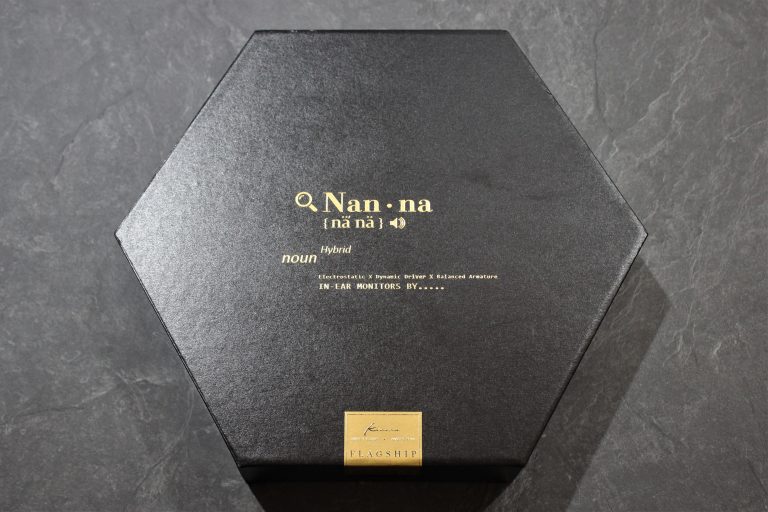




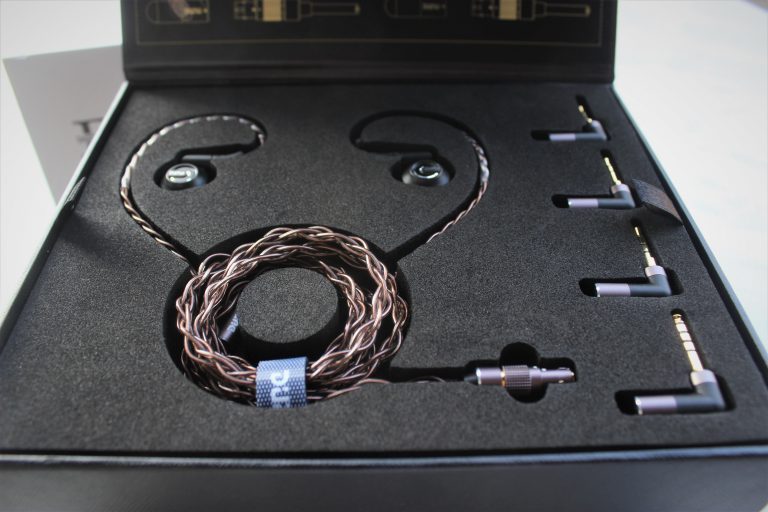



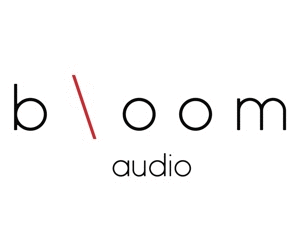
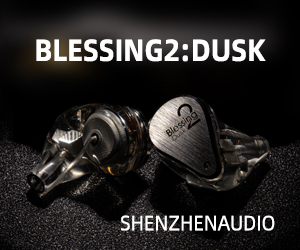
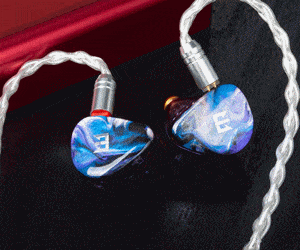

17 thoughts on “On the Record: Power”
An excellent article, and very informative for me. Thanks Crinacle
Great write-up.
One thing I would like to note, is that unlike speakers, for headphones/earphones the SPL sensitivity rating is not as telling.
For speakers it’s usually a B-weighted average from 300Hz-3000Hz (or similar), and if it’s rated at say 8ohm nominal, it usually doesn’t go lower than 6ohm.
For headphones/earphones is usually a B-weighted measurement at just 1kHz, same with impedance, it’s not a nominal measurement.
For speakers, 100dB peaks is sufficient. For headphones/earphones, that number is around 110dB-120dB.
So you may need more power than you think, due to how their specs are taken and also how audibly similar FR between them is measurably different.
Man, I love articles like this.. But I do think you’re doing yourself and this price a huge disservice by claiming that this is merely your *belief*. This is based on demonstrable fact, not a subjective perception.
One thing I would like to ask though (and keep in mind that I’m by no means an electrical engineer)…. When we look at the specs of headphone amps and players the power output seems to always be with reference to a 1khz signal, and we know this is just for a very short amount of time.
So my question is, on what basis can we say that power is not a factor when it’s in the bass and especially subbass region where the power needs to be sustained for longer periods of time due to the longer wavelengths involved? Surely it would be a reasonable assumption to make that if amp A outputs less power than amp B at 1kHz, then amp A will probably not be able to produce as well-controlled bass as amp B. (sorry, I hope that makes sense)… But i suppose this would be more relevant for low power devices like the Fiio BTR1 etc
Fantastic article Crin!
Just a suggestion to add a disclaimer regarding the Apple USB-C dongle. It seems like it has relatively limited power when used with android phones. (Atleast that’s what is mentioned in Amir’s review)
You can fix it with USB Audio Player Pro. The app can adjust the dongle’s analog gain to make it work at full volume.
Thanks for being a reliable voice of reason in a sea of (mostly) pure subjectivity.
There are certainly areas in headphone/IEM audio where we can have discussions precisely how measurements relate to listening experience, but it’s time to put the areas where things are clear and where optimum outcomes are known to rest (cables, amps, DACs).
Wait, so you’re saying that devices with higher impedance don’t necessarily require more power? Then what’s up with Beyerdynamic selling their headphones with multiple impedance options? Shouldn’t they just pick the highest one to avoid damping issues and sell that one?
Beyerdynamic’s target customer when it comes to those multiple impedance option cans are professionals. Giving them every option possible to work best with studio equipment is the idea here. Only the T1 and T5p are intended solely for the “hifi” crowd.
I may be asking for too much but the sensitivity ratings of all the iems in the list would be nice thing to have especially if all are CONVERTED to the same units whether it be dB/V(better) or dB/mW. Clicking on that heading on the database would rank them that way if need be like the way we can click on the value rating, names in alphabetical order etc… This is a very useful thing for people with daps with low maximum volume for example because if they had an iem in the list that they find too quiet then next time, theyll know to look for higher sensitivity ones on your list.
I guess dB/V would only be good for standard rated impedances ex 32 300 600ohms since it is usually listed in desktop and portable amps but for daps they will only have power in mW mostly I guess so probably easier to make everything dB/mW so all moondrop iems for example gave to be converted since they are using dB/V
If a planar magnetic and Dynamic Driver both have same Sensitivity and Impedance ratings, would the planar magnetic require more power to function properly? Meaning what am trying to ask is, do certain driver types require more power to optimally function for the same values of different driver?
Yes, the planar magnetics would require more power – in some cases much more power, because of how inefficient planar magnetics are when it comes to bass.
Low impedance planar magnetics just means that there is a low damping factor more than anything else. It doesn’t mean that it’s necessarily easier to drive, like a dynamic headphone would be at a low impedance. It’s not like dynamic headphones because they are not the same thing.
High impedance dynamics are actually much easier to drive than low impedance planars.
No. If the sensitivity and the impedance are the same, both will require the same amount of power to create the sound wave. Damped or not damped, it WILL create the same sound level or wave for the same amount of power.
“If your IEM’s impedance is lower than the load used in the manufacturer’s measurement, then you can expect even MORE power flowing into your IEM AT MAXIMUM. If it’s higher, then you can expect less power. At MAXIMUM.”
You get maximum power when the output impedance of the amplifier is the SAME as the load (IEM) impedance.
Really enjoyed the article. Very educational. My question is: As a deaf musician, I need more volume to hear myself and others on stage but hearing aids do not serve as in ear monitors. Is there an in-ear monitor system that has higher than “normal” volume, whether with earphones or headphones? I’ve been searching for such a system but all the technical jargon is confusing. Any help or advice will be greatly appreciated. Thanks.
I chuckle when I see HPAs with up to 11 watts of output power, when even 5 watts into low efficiency 86/dB 1m speakers is already loud enough to blow my ears out.